Hilary Ellis has never really considered herself to be a textile artist as such, but rather as an artist who incorporates stitching, thread and beads into her artwork as a way of enhancing the range of mark making.
She always works on paper rather than fabric but sometimes makes collagraphic prints using net, lace and other textured fabrics which she then use as the base on which to work.
Hilary’s background is in fine art and printmaking. She took an honours degree in Fine Art at Liverpool John Moores University and then a couple of years later, a Master’s degree in Printmaking at Camberwell College of Art.
In this interview, Hilary discusses her preferred techniques. We learn about the Japanese aesthetic of wabi-sabi which she employs to create her mesmerising artwork, images of which you can see throughout.

The ambiguity of mixed media
TextileArtist.org: How was your imagination captured by stitch?
Hilary Ellis: I started to incorporate stitching into my art during my time at Camberwell – sometimes making collagraphic plates using thread, string and other fibrous material to create the background print and then often working into the work afterwards with additional stitching and tiny seed beads to add texture.
I enjoy the ambiguity created by combining drawn lines with stitched marks, especially when it is difficult to tell which lines are drawn and which are stitched. I have had three of my mixed media drawn and stitched works accepted for the Jerwood Drawing Prize exhibition in recent years and I do think of stitching as being just another way of drawing and creating a line or mark.
Tell us a bit about your chosen techniques.
My usual method of working is to use large sheets of thick watercolour paper which are then coated with two or three layers of matt varnish. I like to use a square format with the dimensions 90cm x 90cm. Using a roller, I then cover the varnished paper with a thin layer of a fairly neutral coloured oil paint, off white or pale grey.
When the paint has dried I work into the surface using a thin blade craft knife or etching point to create a textured surface. Sometimes before applying the varnish I put a wash of watercolour on the paper. When the scraping and scratching stage is reached, small slivers of the colour are revealed, adding to the overall sense of texture.
The next stage is to work into the surface with thread, creating either stitches and/or knots. I often like to create a more formal or rigid set of marks with the knots or stitching often using a grid structure which results in a dichotomy between the randomness of the texture underneath overlaid with a rigid order on the top.

Blurred boundaries
Where do you think it fits within the sphere of contemporary art?
I am not sure where my work fits within the sphere of contemporary art – it is not quite textile art, not quite printing, not quite fine art but a combination of all three. In recent years the boundaries between the different disciplines have become much more blurred as witness by my works being accepted for the Jerwood Drawing Prize which is essentially a drawing competition.
Do you use a sketchbook?
I do use a sketchbook to try out ideas, usually doing small test pieces to try out different textures and ways of creating marks before embarking on a larger piece of work.
I also like to do small drypoint or woodcut prints on thin Japanese paper, often printing on both the front and the back before adding some stitching or beadwork.

Tell us about your process from conception to conclusion.
I don’t often start with a finished result in mind but prefer to see how the work evolves. The work is very process led and to me, the creative process is an important part of the finished piece.
The works often take many months to evolve, particularly if they involve the application of many small knots or sewing a grid with tiny seed beads. The process is very time-consuming and repetitive and it is sometimes very difficult to predict whether the finished work will be a success.
What environment do you like to work in?
I like to work in my studio in Kent, which is on the top floor of the old agricultural building in which I live. It is surrounded by trees and fields and has a very quiet, and peaceful atmosphere. I have a small etching press which I use to produce the prints which I incorporate into my work.
What currently inspires you?
Sadly my husband passed away recently and I am currently working on a series of pieces which reflect my emotions in coming to terms with this huge event in my life. It is one way of working through my feelings.

The march of time
Who have been your major influences and why?
There are a number of artists who I admire greatly and as such have either consciously or unconsciously influence my work. Eva Hesse was one of my early influences – I admire the way in which she used unusual materials in her work which was quite revolutionary at the time.
Rachael Whiteread was another huge influence while I was doing my degree. I loved her casts of negative spaces and much of my degree work involved making very delicate tissue paper casts of everyday objects.
More recently the pared-down works of Agnes Martin and the Korean artist Park Seo-Bo really appeal to me as does the work of Rebecca Salter, who was a visiting tutor during my time a Camberwell College
Increasingly I find myself responding to the Japanese aesthetic of wabi-sabi or less is more. Wabi-sabi is the art of finding beauty in imperfection. It is simple, slow and uncluttered, it reveres authenticity above all else. It celebrates cracks and crevices and all the other marks that time, weather and loving use leave behind.
It reminds us that we are all transient being on this planet and that our bodies, as well as the material world around us, are in the process of returning to the dust from which we came. Through wabi-sabi, we learn to embrace liver spots, rust and frayed edges, and the march of time they represent.

Can you recommend 2 or 3 books for textile artists?
Two books that I would highly recommend are Slow Stitch by Claire Wellesley-Smith – a beautiful book which advocates the use of hand stitching as a means of slowing down our increasingly frenetic world. Mark-making in Textile Art is by Helen Parrott, another beautiful book with many innovative ideas.
What other resources do you use? Blogs, websites, magazines etc.
I subscribe to Printmaking Today and also Embroidery Magazine and often find artists here who provide inspiration. I also follow up by looking at Artists’ websites and images on Pinterest and Instagram.

What piece of equipment or tool could you not live without?
Equipment that I couldn’t do without are split beading needles which I buy from our local craft shop. They allow me to sew on the tiny seed beads that I use and are also useful for stitching and creating knots.
I also use all the time a piece of equipment that I have developed myself for making perforations in the paper. It consists of a needle bound and superglued onto the end of an old pencil which makes it much easier to either make perforations or to locate the positioning of stitches or knots.

Where can readers see your work this year?
At present, I show my work with The Leyden Gallery, an up and coming gallery in the Shoreditch area of London. The gallery was set up in 2013 and runs a programmes of two weekly exhibitions, some solo shows and some group shows. They also have monthly music evenings and run life drawing classes on a weekly basis.
Apart from showing at the gallery, I submit work to open exhibitions such as The London Group Exhibition, The Jerwood Drawing Prize and the ING Discerning Eye Exhibition.
I also show work on my Instagram account under the name Drawntothread.

For more information visit: www.hilaryellis.co.uk
Let your friends know about this artist’s work by sharing the article on social media. It’s easy – click on the buttons below!


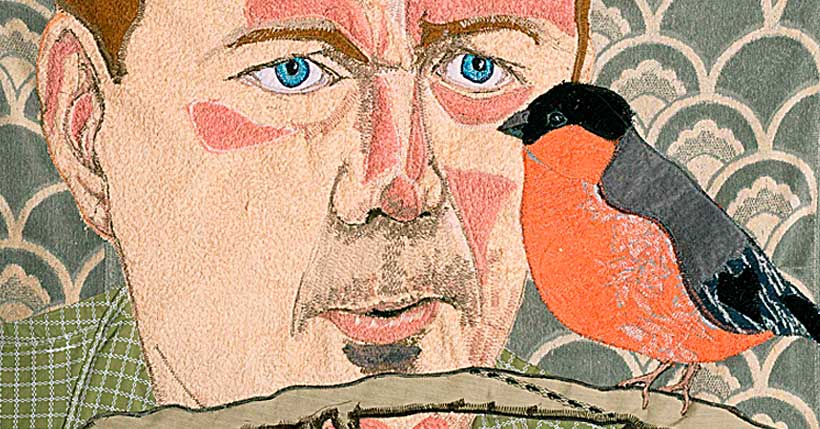

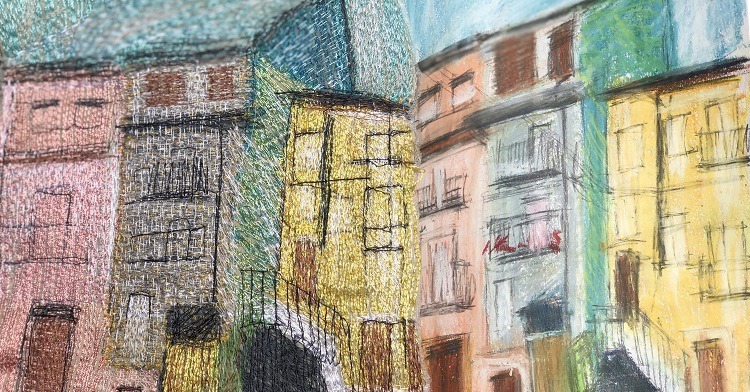
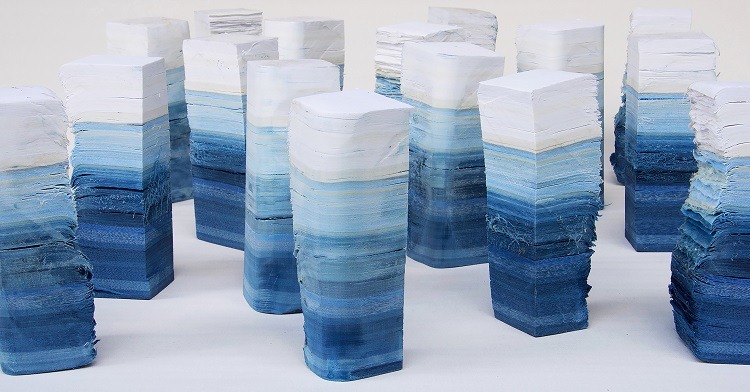
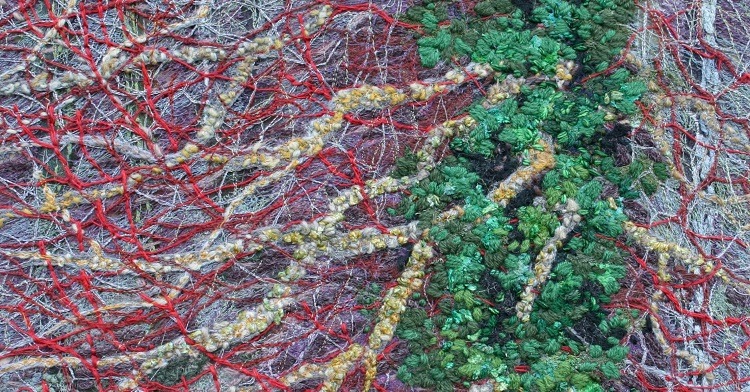
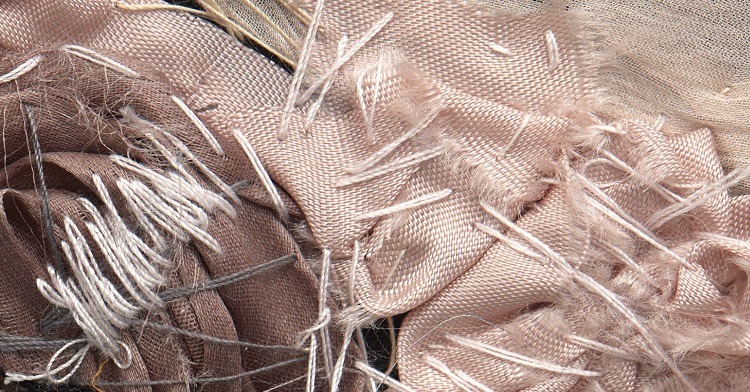
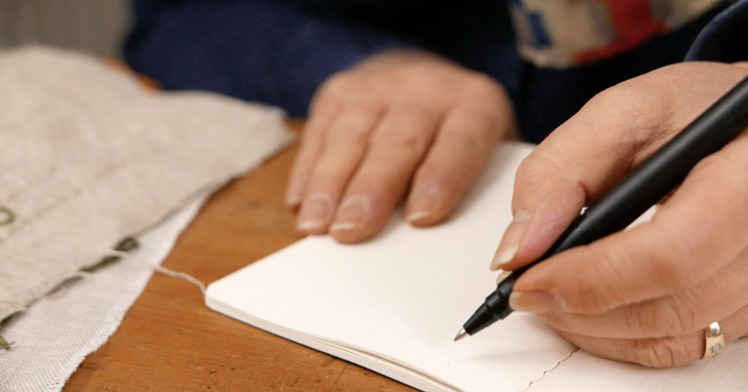
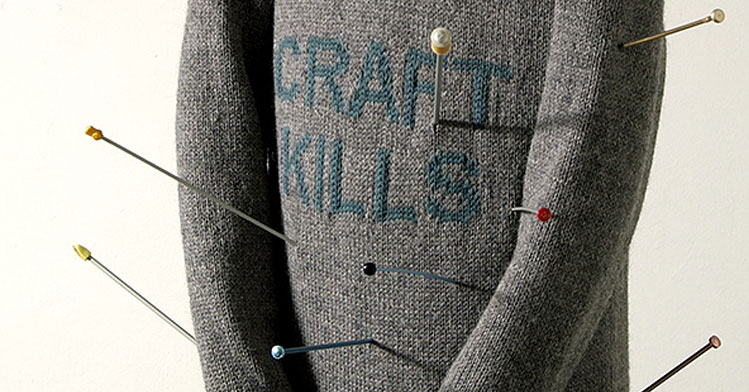
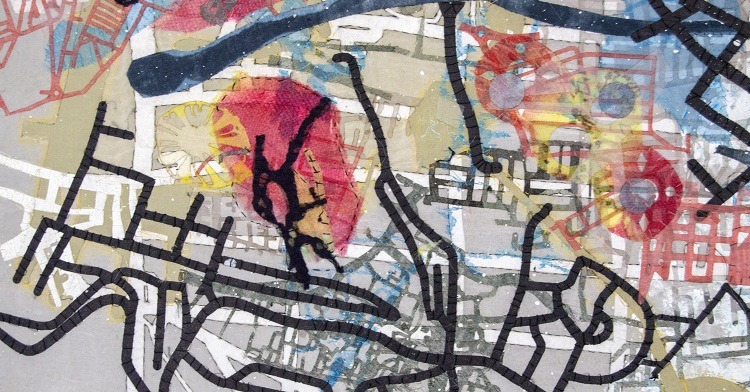
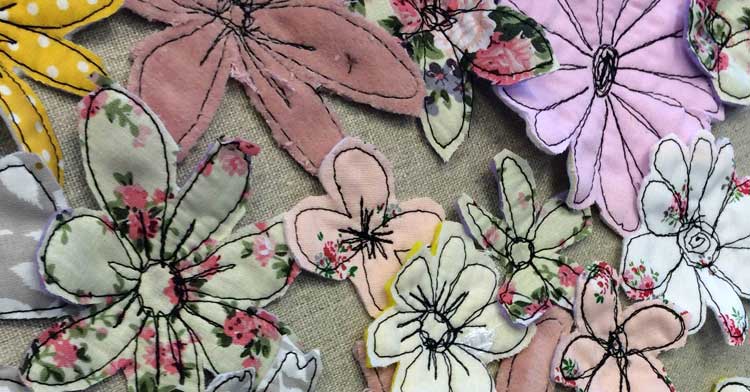
5 comments
Karen
Great article to read, and I really enjoy Hilary’s work. Thank you.
Annie French
Thankyou for sharing this. I went to the Leyden gallery to see Hilary’s work, its beautiful.
Kandace
Loved your work. It’s simple and beautiful.
Mary Wright
Thank you for sharing, I really like and enjoy your work.
Kim Sunsoo
a fresh attempt!